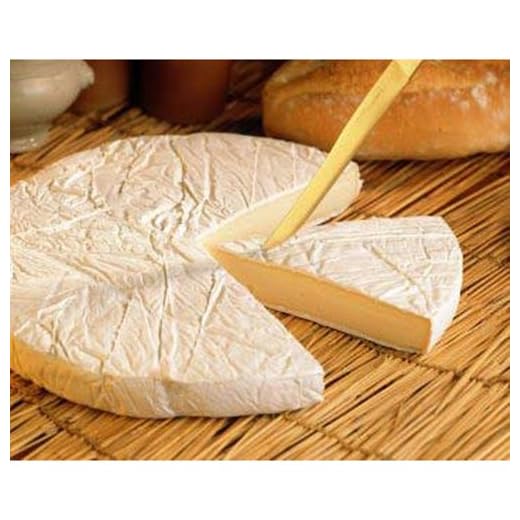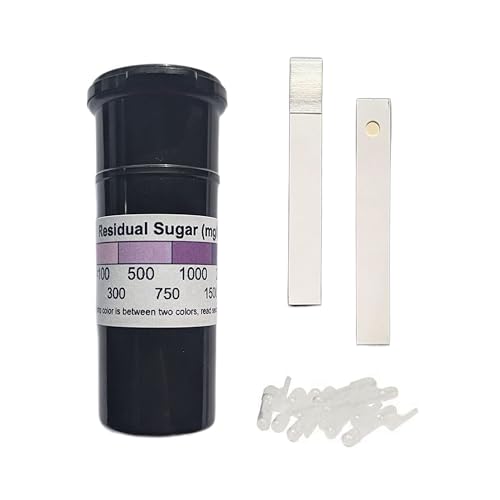



For a delightful experience, consider a robust Cabernet Sauvignon alongside a sharp aged Gouda. The nutty, caramel notes of the cheese complement the wine’s rich tannins, creating a harmonious balance that elevates both elements.
Another excellent combination is a fruity Merlot paired with creamy Brie. The smooth texture and mild flavor of Brie enhance the wine’s berry characteristics, resulting in a luxurious mouthfeel that lingers pleasantly.
If you’re in the mood for something more adventurous, try a spicy Zinfandel with a blue Stilton. The bold, tangy flavors of the cheese meet the wine’s peppery notes, offering a daring yet rewarding pairing that excites the palate.
For a classic touch, opt for a Pinot Noir alongside a mild goat cheese. The wine’s bright acidity cuts through the creaminess of the cheese, allowing the fresh flavors to shine through while maintaining a refreshing balance.
Lastly, a hearty Syrah can be beautifully matched with aged cheddar. The cheese’s sharpness and depth harmonize with the wine’s dark fruit and peppery undertones, creating a robust and satisfying combination that is sure to impress.
Optimal Choices for Enjoying Bold Varietals
Brie, with its creamy texture, complements the tannins found in many bold varietals. The rich, buttery notes enhance the wine’s depth.
Another excellent match is aged Gouda, which brings a nutty, caramel-like flavor that harmonizes beautifully with the fruitiness of merlots and cabernets.
For those who enjoy a sharper taste, consider pairing a robust cheddar. Its sharpness balances the structure of a full-bodied syrah, creating a delightful contrast.
Blue cheese offers a bold option as well. The strong, pungent flavor works well with the richness of zinfandel, enhancing the wine’s berry notes.
- Brie – perfect with cabernet sauvignon
- Aged Gouda – pairs wonderfully with merlot
- Sharp Cheddar – complements syrah effectively
- Blue Cheese – great alongside zinfandel
Grana Padano can also be a fantastic choice. This hard cheese, with its savory and nutty profile, matches well with a pinot noir, allowing the wine’s acidity to shine.
Finally, if you’re in the mood for something unique, try pairing a herbed goat cheese. Its tangy flavor contrasts nicely with the smoothness of a malbec, creating a delightful experience.
- Grana Padano – ideal for pinot noir
- Herbed Goat Cheese – pairs excellently with malbec
Understanding Red Wine Varieties and Their Profiles
Merlot, known for its soft and fruity character, often features notes of plum and chocolate, making it a delightful companion for robust options. Cabernet Sauvignon, with its full-bodied profile and tannic structure, typically offers flavors of blackcurrant and cedar, pairing exquisitely with aged varieties that possess a creaminess to balance its intensity.
Pinot Noir stands out with its elegance and complexity, presenting flavors of cherry and earthiness. This lighter-bodied selection works beautifully alongside creamy, tangy bites, enhancing the overall tasting experience. Syrah, or Shiraz, brings boldness with spicy and smoky undertones, harmonizing well with strong, sharp varieties that can stand up to its richness.
Exploring Flavor Profiles
Each type of grape imparts unique characteristics to the final product. For instance, Zinfandel showcases jammy fruit notes and peppery spices, making it versatile for pairing with a variety of flavors. On the other hand, Malbec, known for its dark fruit and smooth tannins, complements richer dishes and is particularly well-suited for creamy selections that enhance the wine’s depth.
Understanding these profiles not only elevates your tasting experience but also guides you in choosing the right pairings for your occasions. For those interested in enhancing their culinary adventures, consider investing in a best solar panel generator for home for outdoor gatherings where quality and convenience play key roles.
Soft Varieties That Complement Bold Reds
Brie, with its creamy texture and earthy notes, harmonizes beautifully with Cabernet Sauvignon. The wine’s tannins soften against the rich creaminess, creating a delightful balance.
Camembert also shines alongside Syrah. Its buttery richness accentuates the dark fruit flavors and peppery undertones of the wine, enhancing the tasting experience.
Another excellent match is Taleggio, which offers a robust aroma and a slightly tangy flavor. This cheese pairs well with Malbec, as its creaminess can temper the wine’s bold character, making each sip smoother.
For those seeking something different, a fresh goat cheese can elevate a glass of Zinfandel. The cheese’s tangy profile contrasts with the wine’s ripe berry notes, resulting in a refreshing combination.
Lastly, consider a creamy Gorgonzola. This blue cheese plays nicely with the structured nature of Barolo, where the wine’s acidity cuts through the richness, creating an exquisite interplay of flavors.
Hard Varieties and Their Compatibility with Tannins
For optimal enjoyment, look to aged Parmigiano-Reggiano or Pecorino Romano. Their crystalline texture and robust flavors harmonize beautifully with tannic beverages, enhancing the overall experience.
Key Pairings
- Parmigiano-Reggiano: The nutty profile and granular texture complement bold, tannin-rich options like Cabernet Sauvignon or Malbec.
- Pecorino Romano: Its salty and sharp characteristics work well alongside Chianti or Sangiovese, balancing acidity and richness.
- Grana Padano: This milder alternative offers a creamy mouthfeel, pairing seamlessly with Merlot and Syrah.
- Manchego: The slight sweetness and firm texture enhance the fruit-forward notes in Tempranillo or Garnacha.
Serving Tips
- Serve cheeses at room temperature to fully express their flavors.
- Pair with dried fruits or nuts to create a balanced tasting experience.
- Consider using a cheese knife to allow for precise cuts that showcase the texture.
Experimenting with these combinations can reveal exciting contrasts and complements. Enjoy the exploration of flavors and textures that hard varieties bring to the table.
Exploring Blue Cheeses for Unique Pairings
Roquefort stands out with its robust, tangy flavor, making it a remarkable companion for bold Shiraz. The wine’s dark fruit notes harmonize beautifully with the cheese’s salty, creamy texture.
Gorgonzola, particularly the Dolce variety, offers a milder profile that works well alongside a fruity Merlot. The cheese’s sweetness complements the wine’s soft tannins, creating a delightful balance.
Stilton, especially the English variant, is another excellent choice. Its rich, crumbly texture and strong flavor can stand up to a full-bodied Cabernet Sauvignon, enhancing the wine’s dark berry flavors.
When considering a pairing, don’t overlook the unique character of Danish Blue. Its sharpness and creamy mouthfeel can elevate a Zinfandel, where the wine’s spiciness contrasts effectively with the cheese’s intensity.
Experimenting with these varieties can lead to exceptional taste experiences. Each offers a unique combination of flavors that can significantly enhance your enjoyment of both the cheese and the chosen beverage.
Regional Cheese and Wine Pairings to Try
From the rolling hills of Tuscany, a young Pecorino Romano harmonizes beautifully with Chianti, enhancing the wine’s cherry notes while balancing its acidity. In contrast, the sharpness of aged Parmigiano-Reggiano from Emilia-Romagna complements the bold structure of Barolo, creating a delightful interplay of flavors.
Moving to Spain, the creamy texture of Mahón pairs exceptionally well with a glass of Rioja, where the wine’s oak aging synergizes with the cheese’s nutty undertones. For a taste of the French countryside, a rich Brie de Meaux finds its match in a glass of Pinot Noir, allowing the wine to soften the cheese’s creamy richness.
In the Pacific Northwest, a tangy Rogue River Blue from Oregon offers a unique experience alongside a robust Cabernet Sauvignon. The wine’s tannins meld seamlessly with the cheese’s rich, earthy flavors, resulting in a sophisticated pairing.
Exploring the flavors of the Midwest, a smoky Gouda from Wisconsin can be wonderfully enjoyed with a bold Zinfandel. The wine’s fruitiness contrasts beautifully with the cheese’s savory notes, creating a memorable tasting experience.
Lastly, try the unique combination of a Spanish Manchego with a Tempranillo. The cheese’s buttery texture and nutty flavor beautifully complement the wine’s berry and spice characteristics, making for a delightful exploration of regional tastes.
Serving Tips for Cheese and Red Wine Combinations
For an exceptional experience, serve at room temperature. Let the selections rest for about 30 minutes before indulging, allowing the flavors to develop and harmonize beautifully.
Presentation Matters
Utilize a wooden or slate board for an inviting display. Arrange variations by texture and flavor intensity, creating a visual appeal that entices the palate. Consider garnishing with fresh herbs, fruits, or nuts, enhancing both aesthetics and taste.
Temperature Guidelines
Maintain optimal serving temperatures to elevate flavors. Generally, aim for 60-65°F (15-18°C) for both selections. This range ensures that the profiles emerge fully, allowing for a delightful tasting experience.
| Type | Recommended Serving Temperature (°F) | Flavor Profile |
|---|---|---|
| Soft Varieties | 60-65 | Creamy, buttery, mild |
| Hard Varieties | 60-65 | Nutty, sharp, complex |
| Blue Varieties | 60-65 | Bold, tangy, strong |
Encourage guests to explore different combinations on their plates. Offer small bites of accompaniments like olives, charcuterie, or artisanal bread to cleanse the palate between tastings. This approach invites experimentation and enhances the overall enjoyment of the experience.









